Select Language
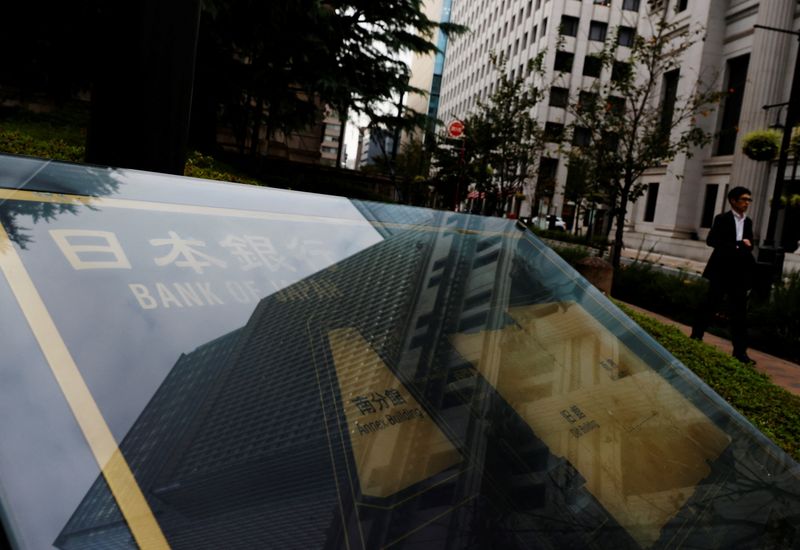
TOKYO (Reuters) - Japan's economy contracted at an annualised clip of 2.9% in July-September from the previous quarter, worse than the initial estimate of a 2.1% drop, government data showed on Friday.
The revised figure for gross domestic product (GDP) released by the Cabinet Office compared with economists' median forecast for a 2.0% decline in a Reuters poll.
On a quarter-on-quarter basis, GDP shrank 0.7%, compared with the initial 0.5% drop reading and a median forecast for a 0.5% fall.
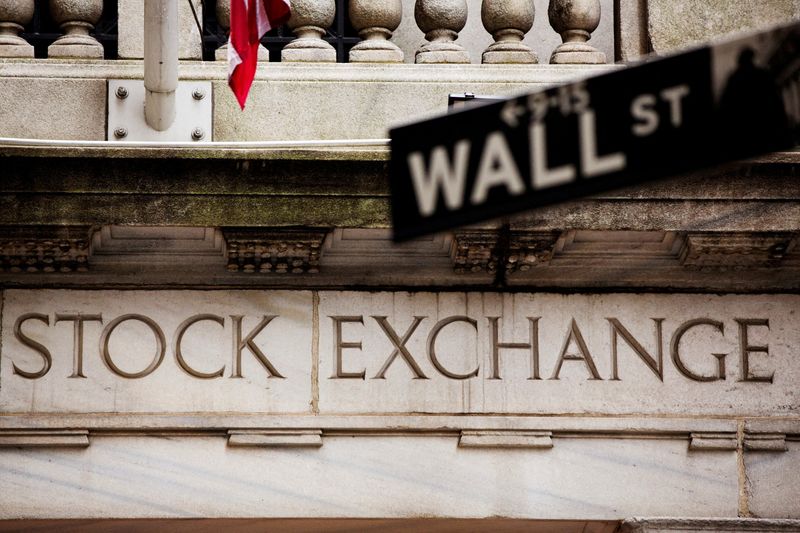
By Naomi Rovnick
LONDON (Reuters) - Investment banks and asset managers have wildly varying stock market and currency calls for 2024, reflecting deep division over whether the U.S. economy will enter a long-heralded recession and drag the world with it.
The lack of consensus among forecasters is a stark contrast to a year ago, when most predicted a U.S. recession and rapid rate cuts that failed to materialise. The world's largest economy expanded by 5.2% in the third quarter of this year.
The divisions this year have produced a scattergram of projections for the U.S. interest rate path and how global assets that are influenced by the Federal Reserve's actions will perform.
Market participants are therefore bracing for a bumpy start to the new year after a strong rally last month for both stocks and bonds based on a short-term consensus that inflation and interest rates are on a firm downward path.
"Whether the U.S. has a hard landing or a soft landing will dominate the market," said Sonja Laud, chief investment officer at Legal & General Investment Management.
"The narrative isn't clear yet," she added, noting that if current interest rate forecasts "were to shift significantly that creates significant volatility".
Options trading data shows that investors are becoming increasingly interested in protecting their portfolios from heightened stock market volatility ahead.
ALL TOGETHER...NOT
Economists polled by Reuters predict 1.2% U.S. GDP growth for 2024 on average.
But while forecasters are united that the Fed's most aggressive rate hiking cycle in decades will cause a slowdown, they are split on whether 2024 will also include a couple of quarters of economic contraction that may prompt rate cuts and weaken the dollar.
Amundi, Europe's largest asset manager, now expects a U.S. recession in the first half of 2024, meaning the group is negative on the dollar and likes emerging market assets.
In foreign exchange, Japan's yen will be the market's "bright spot" as the Bank of Japan is expected to finally move away from its ultra-easy monetary policy, said Amundi CIO Vincent Mortier.
The yen is trading around 147 per dollar, not too far from 30-year lows.
Morgan Stanley, however, sees no recession and reckons the Fed may keep rates high well into next year. It views the dollar index rising to 111 points from 104 currently, the euro dropping to $1 and the yen recovering only moderately to 142 per dollar.
STOCKS, UP OR DOWN?
For U.S. stocks, which drive world equity markets, forecasters are divided between what Citi head of trading strategy Stuart Kaiser calls the "converts and disciples" of last year's strong recession consensus.
"Some bears are (still) very dedicated and believe that if it didn't happen this year it has to happen next year," Kaiser said.
Deutsche Bank predicts a mild U.S. recession in the first half of 2024 and a whopping 175 basis points of rate cuts, with lower borrowing costs driving the S&P 500 share index to 5,100 points. The S&P 500 has gained 19% this year to 4,567.
JP Morgan views a recession as possible and the S&P finishing the year at 4,200, while Goldman Sachs sees only limited recession risk.
Equity analysts' estimates of S&P 500 earnings are currently the most dispersed since the COVID-19 pandemic, according to Blackrock (NYSE:BLK) Investment Institute (BII).
LGIM, which manages roughly $1.5 trillion of assets, is underweight equities and expects a U.S. downturn, Laud said.
Some investors meanwhile had moved beyond the U.S. economy debate to seek other opportunities.
Luca Paolini, chief strategist at Pictet Asset Management, said the firm's big call was for gains in European equities, which they believed were undervalued.
BONDS ARE BACK
Most economic forecasters agree that a global inflation surge is over. But whether this means dramatic rate cuts, which generally raise bond prices as yields fall, is not something investors agree on either.
Bond giant PIMCO puts the probability of a U.S. recession in 2024 at 50% and recommends government debt over equities.
HSBC fixed income strategists target a 3% yield for the benchmark 10-year U.S. Treasury by late 2024, down from about 4.3% currently.
But Adrian Gray, global chief investment officer at Insight Investment Management, said government bond markets had moved too exuberantly already.
"We're seeing the Fed, the European Central Bank and the Bank of England all cutting (rates) from around Q3 next year," he said.
"Right now, government bond markets are pricing in more than that," he said, projecting yields would rise "a little," from here.

BANGKOK (Reuters) - Thailand's headline consumer price index (CPI) came in at -0.44% in November from a year earlier, the second consecutive month and lowest in nearly three years, the commerce ministry said on Thursday.
The figure compared with a 0.31% year-on-year drop in the previous month and against a forecast for -0.30% inflation in November in a Reuters poll.
Government energy policies have lowered prices for diesel, while pork and chicken meat prices also declined, the ministry said.
It was the seventh successive monthly headline inflation that was below the central bank's target range of 1% to 3%.
Core CPI was at 0.58% year-on-year in November, versus a forecast of 0.60%.
In the January-November period, the headline CPI rose an average 1.41% year-on-year, with the core CPI up 1.33%.
Headline inflation next year is seen in the range of -0.3% to 1.7%, due to measures to reduce costs of living, head of the ministry's trade policy and strategy office Poonpong Naiyanapakorn, told reporters.
"There won't be deflation because prices came down due to government measures, but product prices and the economy continued to grow," he said.

BEIJING(Reuters) - China's exports grew for the first time in six months in November, customs data showed on Thursday, suggesting the manufacturing sector may be beginning to benefit from an uptick in global trade flows.
China's exports increased by 0.5% in November from a year earlier, compared with a 6.4% fall in October and beating the 1.1% drop expected in a Reuters poll. Imports fell 0.6%, following a 3.0% increase in October.
Mixed manufacturing data for November has kept alive calls for further policy support to shore up growth but also raised questions about whether predominantly negative sentiment-based surveys have masked improvements in conditions.
The Baltic Dry Index, a bellwether gauge of global trade, climbed to a three year high in November, supported by improved demand for industrial commodities, particularly from China.
South Korean exports, another gauge of the health of global trade, rose for a second month in November, buoyed by chip exports, which snapped 15 months of declines.
Analysts say it is too early to tell whether the recent policy support will be enough to shore up domestic demand, with property, unemployment and weak household and business confidence threatening a sustainable rebound.
The manufacturing sector is also running at different speeds across different industries, analysts caution.
The International Monetary Fund in November upgraded its China growth forecasts for 2023 and 2024 by 0.4% percentage points each. But Moody's (NYSE:MCO) on Tuesday slapped a downgrade warning on China's A1 credit rating.
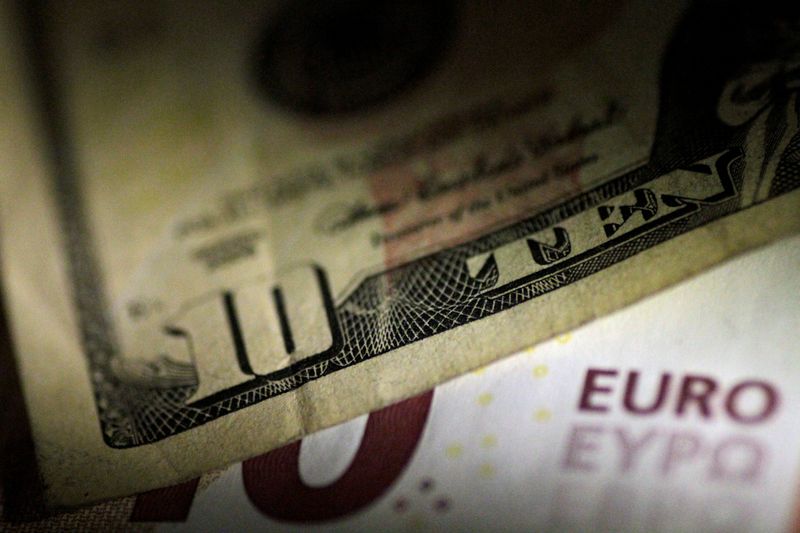
By Ankur Banerjee
SINGAPORE (Reuters) - The euro languished near a three week low on Thursday as traders intensified bets that the European Central Bank (ECB) will start cutting rates from March next year, while the dollar was steady ahead of a crucial payrolls data later this week.
The euro was up 0.05% at $1.0767, but remained close to lows of $1.07595 it touched on Wednesday. The single currency is down 1% this week and on course for the steepest weekly decline since May.
Traders are betting that there is around an 85% chance that the ECB cuts interest rates at the March meeting, with almost 150 basis points worth of easing priced by the end of next year.
The question of a rate cut could emerge in 2024, ECB member and Bank of France head Francois Villeroy de Galhau told a French paper in an interview published on Wednesday.
Villeroy told La Depeche du Midi that "disinflation is happening more quickly than we thought."
The ECB will set interest rates on Thursday next week and is all but certain to leave them at the current record high of 4%. The Federal Reserve and Bank of England are also likely to hold rates steady next Wednesday and Thursday respectively.
The dollar has found its footing this month after a 3% drop in November as traders ramp up rate cut bets for other central banks.
The dollar index, which measures the U.S. currency against six rivals, was little changed at 104.12, having risen 0.17% overnight. The index is up 0.9% this week, on course for its strongest weekly performance since July.
Data on Wednesday showed U.S. private payrolls increased less than expected in November, in yet another sign that the labour market is gradually cooling.
Investor focus will be on Friday's non-farm payrolls data for a clearer picture of the labour market.
"The various labour market statistics suggest the U.S. labour market is slowly loosening," said Carol Kong, a currency strategist at Commonwealth Bank of Australia (OTC:CMWAY).
"In our view, a sharp weakening of the labour market is needed for financial markets to price in a U.S. recession that we have long expected."
A recent string of softening economic data along with commentary from U.S. Federal Reserve officials have stoked expectations that the central bank is at the end of its rate-hike cycle and will begin to cut rates as soon as March.
Markets are pricing in a 60% chance of a rate cut in March, according to CME FedWatch tool, compared to 50% a week earlier. They are anticipating 125 basis points of cuts from the Fed next year.
Analysts though have cautioned that the markets have been too aggressive in pricing in rate cuts next year.
"The market is too aggressively priced for Fed rate cuts heading into 2024 and so we expect a correction in this pricing to deliver a stronger USD," said David Forrester, currency strategist at Credit Agricole (OTC:CRARY) CIB.
Meanwhile, the Bank of Canada on Wednesday held its key overnight rate at 5% and, in contrast to its peers, left the door open to another hike, saying it was still concerned about inflation while acknowledging an economic slowdown and a general easing of prices.
The Canadian dollar tacked on 0.01% versus the greenback to 1.36 per dollar.
Elsewhere, the Japanese yen strengthened 0.16% to 147.07 per dollar. The offshore Chinese yuan eased 0.02% to $7.1717 per dollar. The Australian dollar added 0.03% to $0.655.
In cryptocurrencies, bitcoin was 0.19% higher at $43,910.11.

By Trevor Hunnicutt, Steve Holland and Mike Stone
WASHINGTON (Reuters) -President Joe Biden pleaded with Republicans on Wednesday for a fresh infusion of military aid for Ukraine, warning that a victory for Russia over Ukraine would leave Moscow in position to attack NATO allies and could draw U.S. troops into a war.
Biden spoke as the United States planned to announce $175 million in additional Ukraine aid from its dwindling supply of money for Kyiv. He signaled a willingness to make significant changes to U.S. migration policy along the border with Mexico to try to draw Republican support.
"If Putin takes Ukraine, he won’t stop there," Biden said. Putin will attack a NATO ally, he predicted, and then "we’ll have something that we don't seek and that we don't have today: American troops fighting Russian troops," Biden said.
“We can’t let Putin win,” he said.
The White House warned this week that the U.S. is running out of time and money to help Ukraine repel Russia's invasion.
White House national security adviser Jake Sullivan, in a phone interview with Reuters about building up Ukraine's defense industrial base, said the U.S. was sticking to its long-held position not to pressure Ukraine into negotiations with Russia.
"That's going to have to be up to them. We're just going to keep fighting day in and day out to try to secure this money," Sullivan said.
"We're going to keep making the case that it would be a historic mistake for the United States to walk away from Ukraine at this moment and we believe that argument will ultimately penetrate and prevail," he said.
He said Biden is prepared to have "reasonable, responsible discussions to produce a bipartisan outcome on border policy and border sources."
By mid-November, the U.S. Defense Department had used 97% of $62.3 billion in supplemental funding it had received and the State Department had used all of the $4.7 billion in military assistance funding it had been allocated, U.S. budget director Shalanda Young said this week.
A U.S. official said Washington has less than $1 billion in "replenishment authority." This means that if Congress does not provide new funds to buy replacement equipment, the U.S., Ukraine and arms makers may have to take other steps to backfill stocks.
Border security with Mexico is a major issue weighing on the negotiations about Ukraine and Israel funding.
House and Senate Republicans are backing renewed construction of a border wall, former President Donald Trump's signature goal, while deeming large numbers of migrants ineligible for asylum and reviving a controversial policy under which asylum seekers are told to remain in Mexico while their immigration case is heard.
Biden said he was willing to make "significant" compromises on the border issue but said Republicans will not get everything they want. He did not provide details.
"This has to be a negotiation," he said.
Biden, who had discussed Ukraine in a virtual summit with G7 leaders earlier on Wednesday, said U.S. allies are prepared to continue supporting Ukraine in its 22-month war to repel Russian invaders.
"Extreme Republicans are playing chicken with our national security, holding Ukraine's funding hostage to an extreme partisan border policy," said Biden.
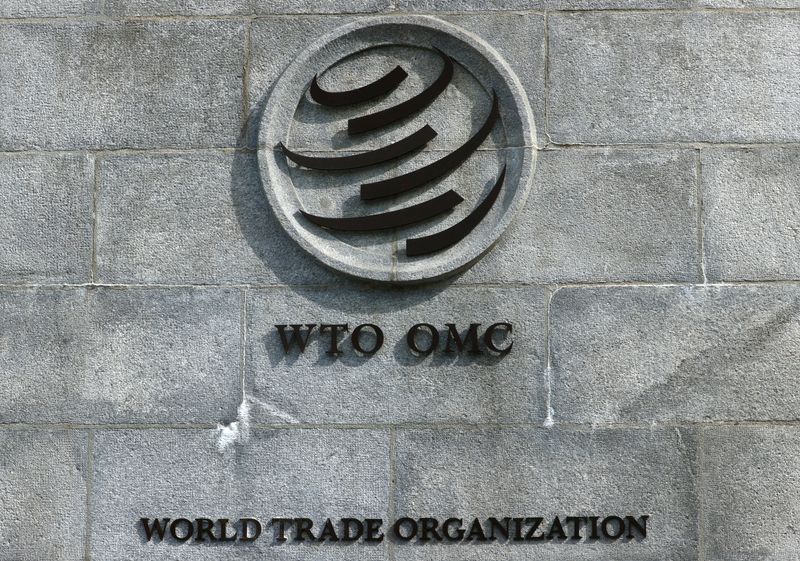
By Sarah Marsh
BERLIN (Reuters) - The EU should join forces with African countries to reform the World Trade Organization's (WTO) subsidy rules as a way to counter Chinese market distortions and diplomatic influence, the German Economic Institute (IW) argued in a paper on Wednesday.
The IW, which is financed by prominent German business associations and carries weight among Berlin policymakers, published the paper ahead of an EU-China summit in Beijing on Thursday and Friday.
The issue of unfair competition is expected to top the agenda, three months after the European Commission launched an anti-subsidy probe into Chinese electric vehicles.
Reform is to be a key topic at the WTO's 13th ministerial conference (MC13) in February, although it requires a full consensus to make any substantive changes.
The WTO's Africa negotiating group has proposed reforming current subsidy rules to better support developing countries - for example allowing them to have local content requirements and to grant subsidies for environmental protection.
The IW argues in its new paper, seen by Reuters ahead of publication, that the EU should expand this initiative to also tighten subsidy rules on the world's top trading countries.
Those major players would be determined according to their share of global trade or income level. That means new rules would affect China, even though the WTO classifies it as a developing country.
Such a joint EU-African initiative could pressure China to accept reform and would help limit the growing global subsidy race.
"In addition, the EU could counter China’s attempt to present itself as the supporter of developing countries’ interests in Geneva," wrote Juergen Matthes and Samina Sultan, authors of the paper "Reforming the WTO’s subsidy rules –A new opportunity to tackle the global distortions of China’s state capitalism".
"If China blocked the... reform, it would also block the vital interests of the African Group and other developing countries in gaining more policy space for development."

By Stella Qiu
SYDNEY (Reuters) - Australia's economy barely grew in the third quarter as exports flagged and households - reeling from a surge in mortgage payments - were reluctant to spend, suggesting rate hikes were working to restrain demand.
Marking an eighth straight quarter of growth, albeit its slowest in a year, real gross domestic product (GDP) inched 0.2% higher in July-September from the previous quarter. That was short of forecasts of 0.4% and a result that bolsters the case for the Reserve Bank of Australia to no longer need to tighten.
Annual GDP growth stood at 2.1%, little changed from the previous quarter, the data from the Australian Bureau of Statistics showed on Wednesday.
"Australia's economy hit the wall in the September quarter," said Andrew Hanlan, an economist at Westpac, adding it was surprising to see just how weak consumer spending was during the quarter.
"The intense headwinds of high inflation, sharply higher interest and additional tax obligations are having a significant impact, leading to a sharp decline in real household disposable income."
Indeed household spending was flat quarter on quarter and has barely grown for four quarters in a row, its worst stretch since the global financial crisis.
Income tax paid jumped 23% from a year ago after the expiry of a tax offset scheme and mortgage payments surged 71% as more people came off fixed-rate mortgages onto higher variable rates.
That pushed the household savings ratio to drop further to 1.1%, its lowest level since 2007.
The slowdown is seen as a necessary consequence of monetary tightening by the Reserve Bank of Australia so that inflation can be tamed back to its 2-3% target range. Inflation was 4.9% in October.
The central bank on Tuesday opted to stand pat to allow more time to assess the impact of a whopping 425 basis points jump in interest rates since May last year.
Markets now figure that the RBA doesn't have to hike any further, given the dovish turn from the Federal Reserve and European Central Bank in recent weeks, with aggressive rate cuts priced in for next year.
Gareth Aird, head of Australian economics at Commonwealth Bank of Australia (OTC:CMWAY), said there was a clear risk that real GDP growth could turn negative in the fourth quarter.
He added that he believes rates have peaked and the easing cycle will start in the third quarter next year.
"A month ago the risks to our call were skewed towards rate cuts starting at a later date. But the run of both domestic and international data over the past month suggests the risks are now more evenly balanced."
Net exports subtracted 0.6 percentage points from gross domestic product as prices for some commodity exports fell.
Productivity - in the measure of output per hour worked - increased 0.9% in the quarter after four straight quarters of declines. RBA's forecasts of inflation returning to its 2%-3% target in late 2025 hinge on a pickup in productivity.
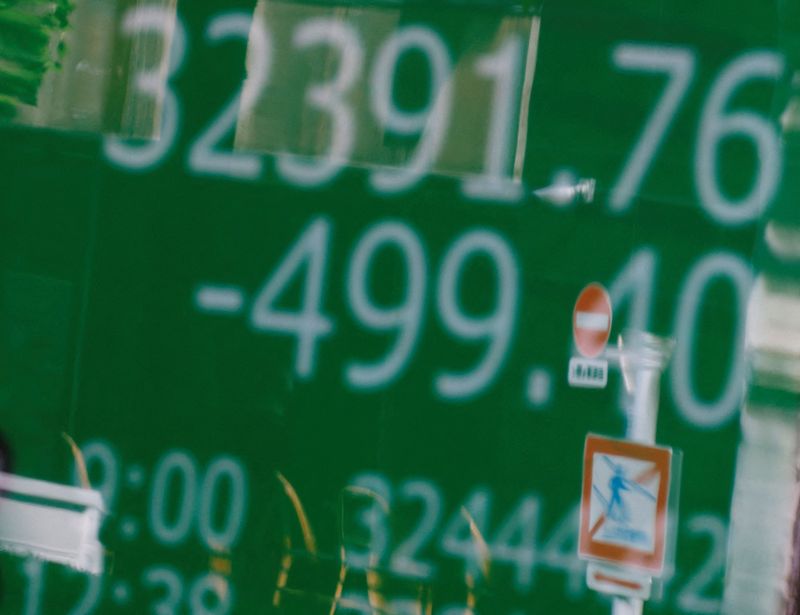
By Kevin Buckland
TOKYO (Reuters) - Asia-Pacific equities gained on Wednesday as bets firmed for a peak in interest rates among major central banks globally, as bond yields continued to decline.
Japanese government bond yields dipped to the lowest since mid-August as U.S. Treasury yields hovered close to a three-month trough.
Meanwhile, crude oil sank to a nearly five-month low, while bullion held steady after dropping back from an all-time high. Bitcoin traded just below $44,000 following its surge this week to a 20-month peak.
U.S. 10-year Treasury yields held steady at around 4.186% after touching 4.163% on Tuesday as cooling labour market data cemented views that the Federal Reserve is done hiking rates, with bets on a first cut coming by March now at around 64%, according to the CME Group's (NASDAQ:CME) FedWatch tool.
Benchmark JGBs yields slid in sympathy, reaching the lowest since Aug. 16 at 0.62%.
Lower borrowing costs boosted equity markets, with big tech a particular beneficiary.
Japan's Nikkei surged 1.6%, rebounding from Tuesday's mid-November low, while Australia's stock benchmark jumped 1.4% and South Korea's KOSPI added 0.56%.
U.S. stock futures also pointed higher, with the tech-heavy Nasdaq indicated up 0.4% following a 0.31% advance overnight for the cash index. S&P 500 futures rose 0.26%, after the cash index ended Tuesday flat.
Overnight, U.S. jobs figures came in softer than expected, but coupled with robust services data, added to the narrative for a soft landing for the economy as the Fed shifts to monetary easing, analysts said.
The "selloff in yields across the curve is strong evidence of the intense focus the market has on this week's labour market data," with the ADP employment report due later on Wednesday and non-farm payrolls on Friday, said IG analyst Tony Sycamore.
For the Nasdaq, "although we remain bullish into year-end, we are not contemplating opening fresh longs at these levels," Sycamore added, recommending buying on dips instead.
Chinese equities underperformed on Wednesday, with sentiment fragile after ratings agency Moody's (NYSE:MCO) slapped a downgrade warning on China's credit rating.
Hong Kong's Hang Seng rose 0.41%, supported mainly by a rally in tech, with a sector subindex climbing about 1%.
Mainland Chinese blue chips were flat.
With markets all but certain the Fed's next move is a cut, dovish rhetoric from European Central Bank officials overnight and the Reserve Bank of Australia's decision to hold policy steady on Tuesday have stoked bets for a peak in rates globally. The Bank of Canada is widely expected to adopt a wait-and-see attitude later on Wednesday as well.
That has supported the U.S. currency's rebound from last week's nearly four-month low versus major peers, with the U.S. dollar index steady at around 103.95 on Wednesday, compared with a trough of 102.46 a week ago.
"The USD weakened when the Federal Reserve looked like they were cutting while other central banks were holding tight," said James Kniveton, a senior corporate FX dealer at Convera in Melbourne.
"Now that looks to be changing, and other central banks are following the Fed's lead."
The dollar added 0.08% to 147.265 yen, while the euro was little changed at $1.07935.
Gold was flat just below $2,020, catching its breath following its surge to a record $2,135.40 on Monday.
Bitcoin was steady at around $43,850 after pushing as high as $44,490 overnight, buoyed by both Fed rate cut expectations and speculation U.S regulators will soon approve exchange-traded spot bitcoin funds.
Crude eased further on Wednesday, weighed down by the worsening demand outlook from China, and doubts about the impact of OPEC cuts. [O/R]
Brent crude futures fell 8 cents, or 0.1%, to $77.12 a barrel, while U.S. WTI crude futures were down 13 cents, or 0.2%, at $72.19 a barrel. Both benchmarks closed at their lowest since July 6 in the previous session.

By Lucia Mutikani
WASHINGTON (Reuters) -U.S. job openings dropped to more than a 2-1/2-year low in October, the strongest sign yet that demand for labor was cooling amid higher interest rates.
The Labor Department's Job Openings and Labor Turnover Survey, or JOLTS report, on Tuesday also showed that there were 1.34 vacancies for every unemployed person in October, the lowest since August 2021. There were fewer resignations, with workers generally staying put at their jobs, which over time could help to ease wage inflation.
Combined with data last week showing inflation subsiding in October, it bolstered optimism that the Federal Reserve was probably done raising interest rates this cycle, with financial markets and economists even anticipating a rate cut in mid-2024.
"These data will be welcome news for policymakers," said Rubeela Farooqi, chief U.S. economist at High Frequency Economics in White Plains, New York. "The data support our view that rates are at a peak and the Fed's next move will be a rate cut, likely in second quarter of 2024."Job openings, a measure of labor demand, fell 617,000 to 8.733 million on the last day of October, the lowest level since March 2021, the Labor Department's Bureau of Labor Statistics said. Data for September was revised lower to show 9.350 million job openings instead of the previously reported 9.553 million.
Economists polled by Reuters had forecast 9.30 million job openings in October. The largest monthly decline in vacancies since May was led by the health care and social assistance sector, where unfilled jobs dropped by 236,000.
Job openings decreased by 168,000 in the finance and insurance industry, while real estate, rental and leasing had 49,000 fewer positions. But job openings increased by 39,000 in the information sector.
The job openings rate dropped to 5.3% from 5.6% in September. Hiring slipped 18,000 to 5.886 million. Hiring dropped 110,000 in the accommodation and food services industry, which had been the biggest driver for job growth since the recovery from the COVID-19 pandemic. The hires rates dipped to 3.7% from 3.8% in the prior month.
Resignations slipped 18,000 to 3.628 million. The quits rate, viewed as a measure of labor market confidence, was unchanged at 2.3% for the fourth consecutive month. Declining quits point to slower wage growth and ultimately price pressures in the economy.
The Fed is expected to leave rates unchanged next Wednesday. Since March 2022, the central bank has raised its benchmark overnight interest rate by 525 basis points to the current 5.25%-5.50% range. Though the labor market is slowing, it is only doing so only gradually.
Layoffs rose 32,000 to a still-low 1.642 million in October. The layoffs rate was unchanged at 1.0%.
The government is expected to report on Friday that nonfarm payrolls increased by 185,000 jobs in November, according to a Reuters survey of economists, boosted by the return of about 33,000 striking United Auto Workers union members. Payrolls increased by 150,000 positions in October.
November's anticipated job count would be below the average monthly gain of 258,000 over the prior 12 months.

